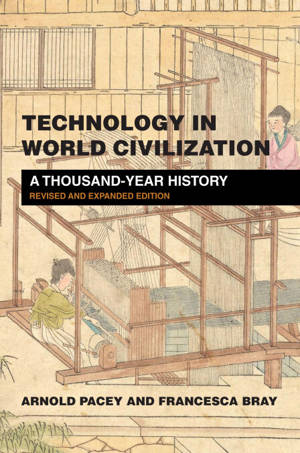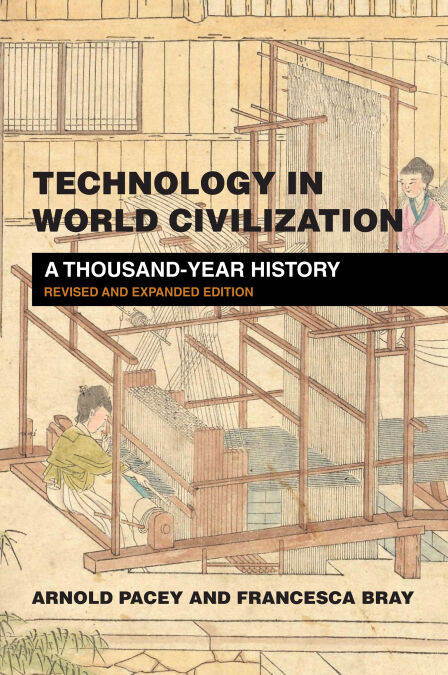
Je cadeautjes zeker op tijd in huis hebben voor de feestdagen? Kom langs in onze winkels en vind het perfecte geschenk!
- Afhalen na 1 uur in een winkel met voorraad
- Gratis thuislevering in België vanaf € 30
- Ruim aanbod met 7 miljoen producten
Je cadeautjes zeker op tijd in huis hebben voor de feestdagen? Kom langs in onze winkels en vind het perfecte geschenk!
- Afhalen na 1 uur in een winkel met voorraad
- Gratis thuislevering in België vanaf € 30
- Ruim aanbod met 7 miljoen producten
Zoeken
Technology in World Civilization, revised and expanded edition E-BOOK
A Thousand-Year History
Arnold Pacey, Francesca Bray
E-book | Engels
€ 39,42
+ 39 punten
Omschrijving
The new edition of a milestone work on the global history of technology.
This milestone history of technology, first published in 1990 and now revised and expanded in light of recent research, broke new ground by taking a global view, avoiding the conventional Eurocentric perspective and placing the development of technology squarely in the context of a "world civilization." Case studies include "technological dialogues" between China and West Asia in the eleventh century, medieval African states and the Islamic world, and the United States and Japan post-1950. It examines railway empires through the examples of Russia and Japan and explores current synergies of innovation in energy supply and smartphone technology through African cases.
The book uses the term "technological dialogue" to challenges the top-down concept of "technology transfer," showing instead that technologies are typically modified to fit local needs and conditions, often triggering further innovation. The authors trace these encounters and exchanges over a thousand years, examining changes in such technologies as agriculture, firearms, printing, electricity, and railroads. A new chapter brings the narrative into the twenty-first century, discussing technological developments including petrochemicals, aerospace, and digitalization from often unexpected global viewpoints and asking what new kind of industrial revolution is needed to meet the challenges of the Anthropocene.
This milestone history of technology, first published in 1990 and now revised and expanded in light of recent research, broke new ground by taking a global view, avoiding the conventional Eurocentric perspective and placing the development of technology squarely in the context of a "world civilization." Case studies include "technological dialogues" between China and West Asia in the eleventh century, medieval African states and the Islamic world, and the United States and Japan post-1950. It examines railway empires through the examples of Russia and Japan and explores current synergies of innovation in energy supply and smartphone technology through African cases.
The book uses the term "technological dialogue" to challenges the top-down concept of "technology transfer," showing instead that technologies are typically modified to fit local needs and conditions, often triggering further innovation. The authors trace these encounters and exchanges over a thousand years, examining changes in such technologies as agriculture, firearms, printing, electricity, and railroads. A new chapter brings the narrative into the twenty-first century, discussing technological developments including petrochemicals, aerospace, and digitalization from often unexpected global viewpoints and asking what new kind of industrial revolution is needed to meet the challenges of the Anthropocene.
Specificaties
Betrokkenen
- Auteur(s):
- Uitgeverij:
Inhoud
- Aantal bladzijden:
- 356
- Taal:
- Engels
Eigenschappen
- Productcode (EAN):
- 9780262366281
- Verschijningsdatum:
- 2/08/2021
- Uitvoering:
- E-book
- Beveiligd met:
- Adobe DRM
- Formaat:
- ePub

Alleen bij Standaard Boekhandel
+ 39 punten op je klantenkaart van Standaard Boekhandel
Beoordelingen
We publiceren alleen reviews die voldoen aan de voorwaarden voor reviews. Bekijk onze voorwaarden voor reviews.









